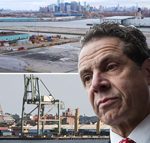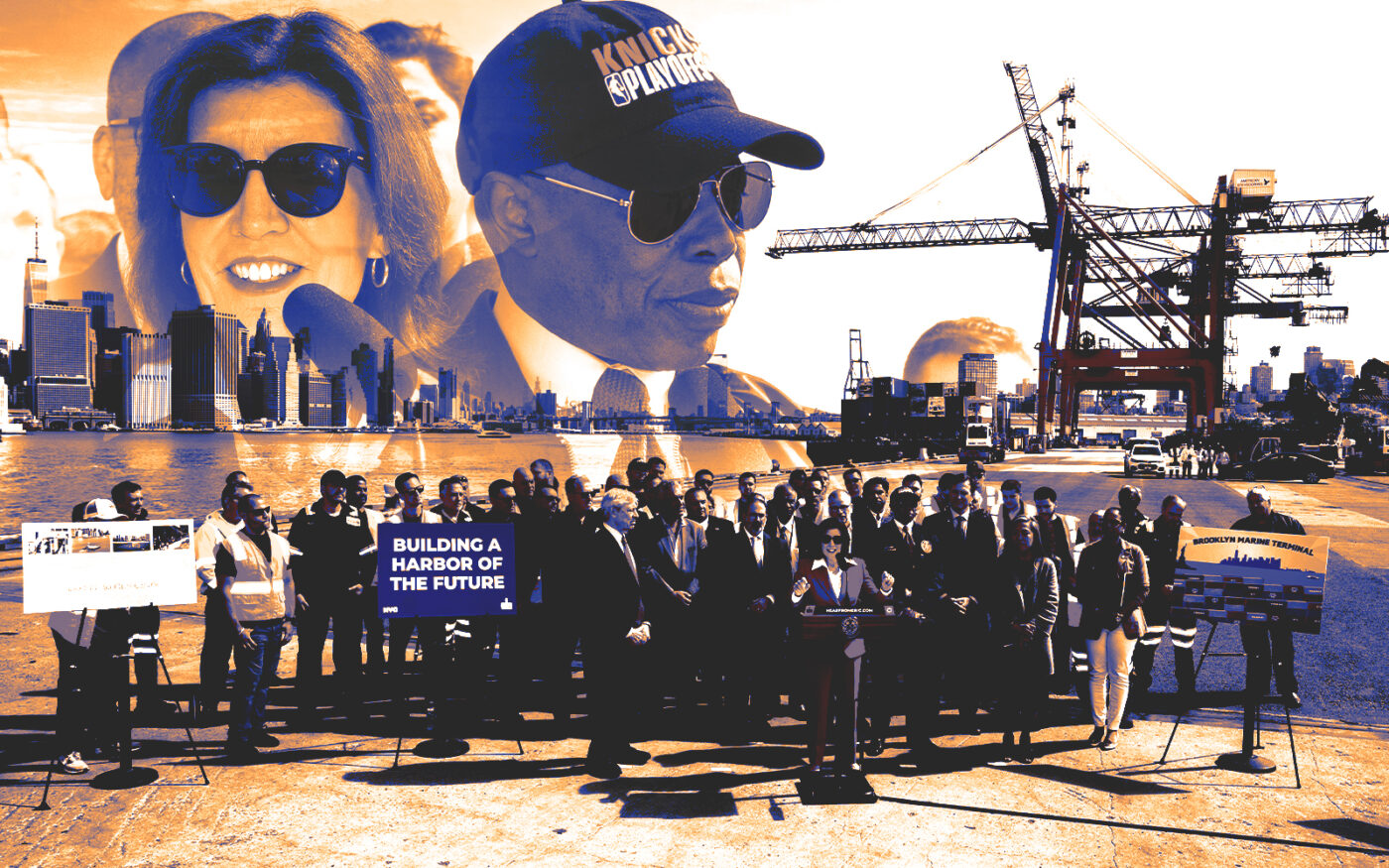New York is rolling the dice on transforming a large swath of Brooklyn coastline into something more than a shipping operation.
New York City cut a deal with the Port Authority of New York and New Jersey to take control of 120 acres from the southern edge of Brooklyn Bridge Park to Red Hook, Bloomberg reported. The plan was announced later on Tuesday by Gov. Kathy Hochul, who signed off on the agreement despite furious objections from Rep. Jerrold Nadler.
The city plans to redevelop the mile of land — which stretches up to one block inland — into housing, retail, green space and a modernized port where the Brooklyn Marine Terminal in Red Hook operates. The Port Authority’s mandate is movement of goods, and its control of the Brooklyn site had essentially made it off-limits for residential or commercial development.
The opportunity for the real estate industry lies in the spectacular views of New York Harbor and Lower Manhattan; condominium units next to Brooklyn Bridge Park have fetched ten-digit sums. But redevelopment of the piers would be challenging because of their deterioration, which accelerated as water quality improved and marine borers became more active, and lack of infrastructure.
Nadler is a longtime champion of the small container port in Red Hook, but his district was redrawn to include only Manhattan — and he might not have been able to stop the deal in any event: The Port Authority has long wanted to shed the port, which was a drain on its finances.
With a green light from Hochul, the bi-state agency was able to trade it to the Adams administration for Staten Island’s Howland Hook Marine Terminal, which it had been leasing from the city.
No cash is changing hands in the deal, which represents the city’s largest real estate transaction in at least 20 years. The Port Authority will receive ownership of 225 acres at Howland Hook.
A memorandum of understanding between the city, state and Port Authority is expected to be signed this week, which will shed light on transfer and lease terms. The land transfer itself will likely take months.
“The potential for this area is limitless,” Mayor Eric Adams said in a statement. The mayor said that the city would work with the local community, elected officials, and key stakeholders to design a plan for the land that works for Red Hook and the city as a whole.
Previous attempts to redevelop the area have failed, but this is the first time the city will control all of the land involved, Deputy Mayor Maria Torres-Springer noted.
Nadler has for decades urged the Port Authority to invest in the Red Hook container operation, which the Adams administration now says it will do. The city will launch a planning process to determine the best location for the port and will allocate an initial $80 million to repair several piers and plan the redevelopment.
The city, however, lacks the Port Authority’s expertise and obligation to maintain port facilities, raising questions about whether its commitment to the Red Hook container operation will last.
In a blistering statement, Nadler urged the city, state, and Port Authority to abandon the deal.
“There has been no rational justification provided for the economically detrimental decision to close or shrink the Red Hook cargo facility,” where the operator, Red Hook Container Terminals, supports 500 high-paying union jobs.
Goods shipped to Red Hook are loaded onto barges bound for New Jersey or onto trucks destined for points east of the Hudson River.
The state, for its part, will make a $15 million investment towards a cold storage facility on the site, which Hochul said will ease the city’s dependence on trucks.
Read more



